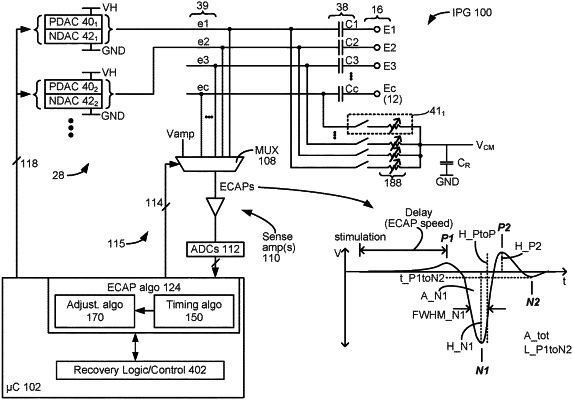| CPC A61N 1/36125 (2013.01) [A61B 5/388 (2021.01); A61B 5/4058 (2013.01); A61N 1/025 (2013.01); A61N 1/36135 (2013.01); A61N 1/36146 (2013.01)] | 5 Claims |

|
1. A method for operating a stimulator device, the stimulator device comprising a plurality of electrode nodes, each electrode node configured to be coupled to one of a plurality of electrodes configured to contact a patient's tissue, the method comprising:
providing actively-driven stimulation at at least one stimulation node selected from the plurality of electrode nodes, wherein the stimulation comprises at least one pulse comprising at least a first phase;
providing passively-driven passive charge recovery for a passive charge recovery duration,
selecting a first recovery impedance for a high-impedance portion of the passive charge recovery duration and a second recovery impedance for a low-impedance portion of the passive charge recovery duration, wherein the first recovery impedance is greater than the second recovery impedance,
using a variable resistance circuitry of the stimulator device to provide the selected recovery impedances during the passive charge recovery duration,
determining a time at which the neural response will be present at the sensing electrode node and timing the passive charge recovery duration so that the high-impedance passive charge recovery portion will overlap the time at which the neural response will be present the sensing electrode node, and
sensing an evoked neural response evoked by the stimulation during the high-impedance passive charge recovery portion at at least one sensing electrode node selected from the plurality of electrode nodes during the passive charge recovery duration.
|